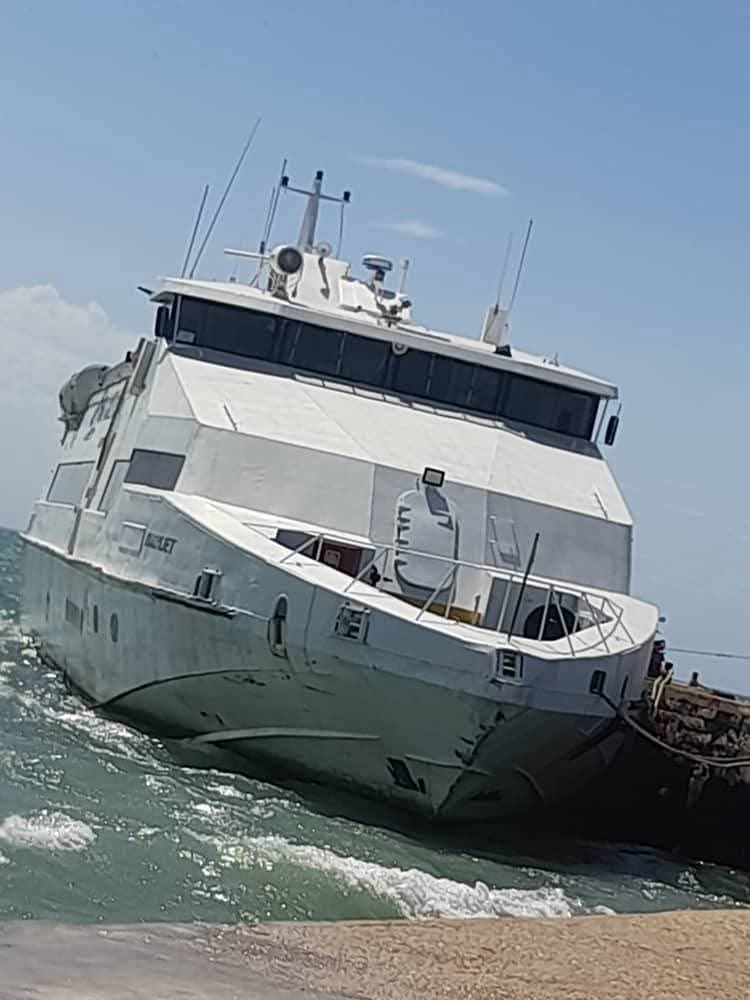“The Madras and Monserrat’s search for National identity through its National Wear” is the theme of the St Patrick’s Exhibition which opened at the Montserrat National Museum on Friday, March 10, 2023.

Governor Sarah Tucker and her husband Howard, Premier Joseph Farrell, Financial Secretary Lindorna Lambert, Head of the Public Library Sonja Smith, Director of the Montserrat Arts Council Kenneth Silcott and President of the museum and the Montserrat National Trust Dulcie James were some of the officials represented at the afternoon launch.
Premier Farrell commended the team at the museum and the trust for their continued work to bring Montserrat’s history to the forefront.
Governor Tucker, whose dress was made from the madras used for Montserrat’s national wear, officially opened the exhibition.
The exhibition traces the history of Madras from its origin in India to Montserrat where it was integrated into our National Dress in 2003. It features several printed panels of history which include the Origins of Madras, Madras & Slavery, The Headwrap, and Slavery Dresscode. The second section of the exhibit displays Montserrat’s madras journey through the years. It also includes images and samples of the way the madras is used commercially by various designers including Edella Allen of Edella Designs, in fashion shows and other national events.
According to the Montserrat National Trust, “it is believed that production of the madras first started as far back as the 12th Century on the Indian Subcontinent. Trading routes were popular between far Eastern lands, the Middle East and Africa so the madras fabric was worn throughout that part of the world by nobles, kings, and peasants.
“The occupation of the Americas by Europeans from the 16th Century and the Slave Trade in particular, expanded trading of madras to the Caribbean. The madras was used for slave clothing and they creatively combined the African, Indian, and European cultural dress styles to create colorful expressions of Caribbean identity up to present day.
“The predominant use of the headdress, head wrap or head tie is significant as it underscores the continuation of a rich African heritage which transcends many generations. The colorful use of the madras in national wear, especially in the French and English-speaking territories speaks to the ongoing desire to create expressions of pride, love, and independence in each of the islands of the region.
“Early pictures of the Montserrat women highlight that the Madras was used primarily as part of head covering as can be seen in photographs of women in the fashionable long dresses at a special gathering on the Sturge plantation in Elberton dating back to early 1880s. The red madras head tie, in particular, continued to be part of the dress code of women for over 100 years as can be seen in the photos of women at the Plymouth Market in 1967 and the masquerades during the Christmas Festival Plymouth Street around the same period. Later pictures also show masquerades and cultural groups wearing this red madras head tie.
“Montserrat, the Emerald Isle of the Caribbean, over the years, was keen to find its own expressions of national identity through its national wear. Evidence is shown in photos as far back as 1966 during the visit of Queen Elizabeth 11, where the predominant emerald green and white formed part of the dress of national dancers. The Emerald Community Singers formed in 1972, continued this trend of using emerald green in their costumes. Other individuals and groups followed the same practice of using green and white in their costumes or dress when they represented Montserrat overseas.
“It is therefore no surprise that Montserrat, the Emerald Isle, after several attempts at finding an accepted National wear, integrated the emerald green into a madras pattern that became the popular choice for its National Dress in 2003.
“On this twentieth anniversary of the formal search and selection, the Montserrat Madras is wholly integrated into the National Wear, and the economic and cultural identity of the people of Montserrat. The Madras is therefore part of Montserrat’s history, culture, and identity for hundreds of years,” the Trust notes.
The Montserrat National Museum is open on Monday, Thursday and Friday from 9:30AM – 3:30PM. Admission is $10 per person.
Discover more from Discover Montserrat
Subscribe to get the latest posts sent to your email.







